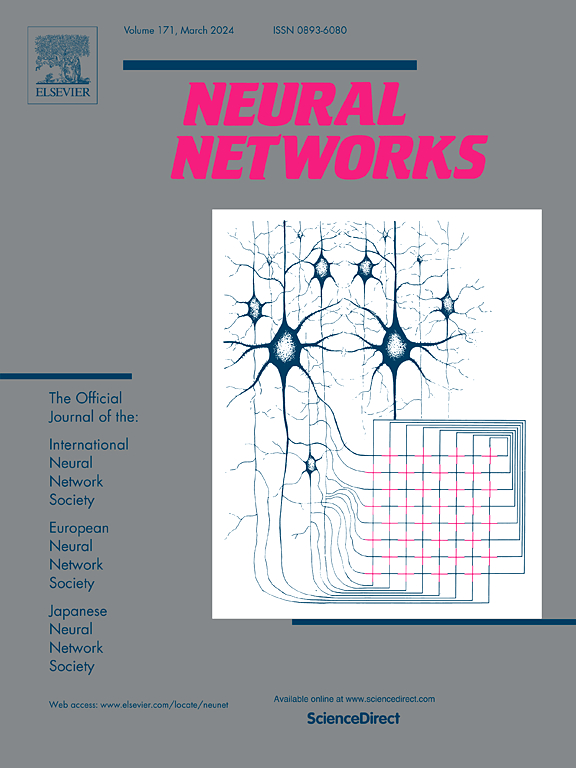Mathematical expression exploration with graph representation and generative graph neural network
IF 6
1区 计算机科学
Q1 COMPUTER SCIENCE, ARTIFICIAL INTELLIGENCE
引用次数: 0
Abstract
Symbolic Regression (SR) methods in tree representations have exhibited commendable outcomes across Genetic Programming (GP) and deep learning search paradigms. Nonetheless, the tree representation of mathematical expressions occasionally embodies redundant substructures. Representing expressions as computation graphs is more succinct and intuitive through graph representation. Despite its adoption in evolutionary strategies within SR, deep learning paradigms remain under-explored. Acknowledging the profound advancements of deep learning in tree-centric SR approaches, we advocate for addressing SR tasks using the Directed Acyclic Graph (DAG) representation of mathematical expressions, complemented by a generative graph neural network. We name the proposed method as Graph-based Deep Symbolic Regression (GraphDSR). We vectorize node types and employ an adjacent matrix to delineate connections. The graph neural networks craft the DAG incrementally, sampling node types and graph connections conditioned on previous DAG at every step. During each sample step, the valid check is implemented to avoid meaningless sampling, and four domain-agnostic constraints are adopted to further streamline the search. This process culminates once a coherent expression emerges. Constants undergo optimization by SGD and BFGS algorithms, and rewards refine the graph neural network through reinforcement learning. A comprehensive evaluation across 110 benchmarks underscores the potency of our approach.
用图表示和生成图神经网络探索数学表达式
树表示中的符号回归(SR)方法在遗传规划(GP)和深度学习搜索范例中表现出值得称赞的结果。尽管如此,数学表达式的树形表示偶尔会包含冗余的子结构。将表达式表示为计算图,通过图的表示使表达式更加简洁直观。尽管在SR的进化策略中采用了深度学习,但深度学习范式仍未得到充分探索。认识到深度学习在树中心SR方法中的深刻进步,我们提倡使用数学表达式的有向无环图(DAG)表示来解决SR任务,并辅以生成图神经网络。我们将提出的方法命名为基于图的深度符号回归(GraphDSR)。我们对节点类型进行矢量化,并使用相邻矩阵来描绘连接。图神经网络以增量的方式生成DAG,在每一步中采样节点类型和基于前一个DAG的图连接。在每个采样步骤中进行有效检查以避免无意义采样,并采用四个领域不可知约束进一步简化搜索。当一个连贯的表达出现时,这个过程达到高潮。常数通过SGD和BFGS算法进行优化,奖励通过强化学习来完善图神经网络。对110个基准的全面评估凸显了我们方法的效力。
本文章由计算机程序翻译,如有差异,请以英文原文为准。
求助全文
约1分钟内获得全文
求助全文
来源期刊

Neural Networks
工程技术-计算机:人工智能
CiteScore
13.90
自引率
7.70%
发文量
425
审稿时长
67 days
期刊介绍:
Neural Networks is a platform that aims to foster an international community of scholars and practitioners interested in neural networks, deep learning, and other approaches to artificial intelligence and machine learning. Our journal invites submissions covering various aspects of neural networks research, from computational neuroscience and cognitive modeling to mathematical analyses and engineering applications. By providing a forum for interdisciplinary discussions between biology and technology, we aim to encourage the development of biologically-inspired artificial intelligence.
 求助内容:
求助内容: 应助结果提醒方式:
应助结果提醒方式:


